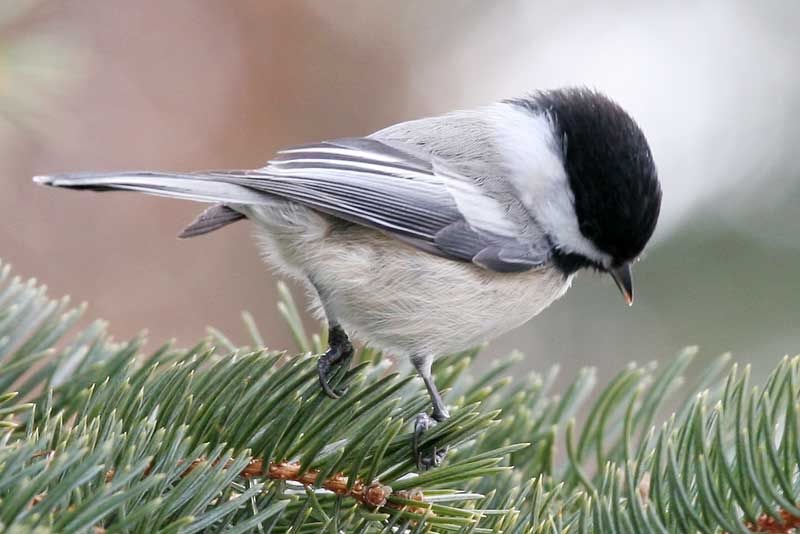Feb 18, 2015
By: Lorraine Julien
As you try to stay warm this month, just think of the animals and birds that somehow survive these freezing, icy winter blasts. It seems they have all adapted their own methods of survival.
I used to wonder how tiny little birds like chickadees ever managed to survive temperatures as low as minus 40C but, I understand, they go into a deep sleep called “torpor”. The torpor state can last for a few hours on a really cold night or it may last for days or weeks. Only warm blooded animals can use the deep sleep of torpor to survive the winter such as raccoons, skunks, some birds and some rodents.
The other type of deep sleep, of course, is “hibernation”. Black bears can sleep for more than six months. They don’t eat or drink and females may give birth while in the den. This deep sleep has the added benefit of saving energy as the heartbeat drops to a fraction of its normal level.
For many years, there was controversy as to whether bears actually hibernated, because over-wintering bears only experienced a slight drop in body temperature compared to smaller animals. Hibernation though is defined by lowered rates of metabolic activity. Since the metabolism of a bear can drop by 75%, they are confirmed hibernators.
Another true hibernator is the woodchuck. Its temperature drops from 98F to 40F. Its heartbeat slows from 80 beats per minute to just 4!! Can you imagine the shock when poor Wiarton Willie and his friends are awakened from such a deep sleep to encounter the cold and noise of a bunch of humans hanging around his cage?
A lot of animals survive the winter by staying active the whole time. They grow a layer of fat and thicker, warmer fur. The snowshoe hare and the short-tailed weasel adapt to their winter habitat by turning white so that they blend in with the snow. Others that are active all winter are mink, shrews, voles, foxes and some squirrels. With the trees bare of leaves, it’s easy to spot the leaf houses built by squirrels where they can snuggle together to keep warm and also be hidden from predators. In forested areas they prefer hollows in old trees to build their nests.
Although raccoons supposedly go into a torpor state, it has been my experience that they wake quite often, especially during mild days, and grab whatever food they can – quite often food from any nearby bird feeders! Raccoons have always loved to search for food in the open waters of the spring that bubbles up in front of our cottage. It is open all year regardless of temperatures.
Many birds migrate south to warmer climates although quite a few stay here – grouse, wild turkeys, chickadees, hawks, owls, jays, etc. Most grow inner winter feathers and fluff them up to stay warm. Grouse burrow into snowdrifts during cold spells and use the snow to protect them from the freezing air. This is called a ‘snow roost’. Like mammals, many birds such as geese and ducks put on an extra layer of insulating fat as cold weather approaches.
Even some insects migrate such as the monarch butterfly. Of course it may take several generations of the monarch to make the arduous journey south. They go through the same routine when they head north again.
A few frogs such as spring peepers, tree frogs and wood frogs spend the winter buried under dead leaves on the forest floor. Their blood changes so they don’t freeze easily. Snow on top of the leaves also helps keep them from freezing. You’ve all heard the peepers on the first warm day of spring singing their hearts out.
Some reptiles and amphibians such as turtles burrow into the mud at the bottom of a pond or shallow bay. They get the oxygen they need from the water through their skin.
While walking the past couple of mornings, I heard chickadees calling out their “fee bee” sound. They do a better version than real phoebes. The chickadees start to make this sound when it’s getting near breeding time – perhaps the males are calling out to the girls – in any case it makes me feel as though spring is only a few weeks away! You have to be optimistic.
More Stories
- No Winner Yet in Catch The Ace But Fundraising Target Met
- South Frontenac Food Bank Opens Second Location in Battersea
- Sharbot Lake Pentecostal Church Anniversary - 1925-2025
- Frontenac Holistic Health Fair - September 20 At Storrington Centre
- Odd Year For Real Estate - But Sales Are Steady Year Over Year
- 193rd Kingston Fall Fair
- Kim Phuc - the Napalm Girl - To Visit Flinton In November
- South Frontenac Council - September 2
- Sticker Shock - EV Charging Station To Cost North Frontenac Township
- 30th Anniversary Verona Car Show

